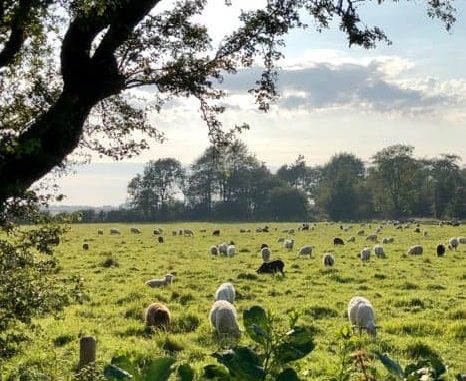
Livestock farmers Jen and Andy of Fernhill Farm in Somerset, England have been practicing regenerative agriculture since before they had a name for it. Twenty years ago their “extensive nomadic ways” were dismissed as too traditional; now it’s clear these pioneers of sustainable agroecology were ahead of their time. Ursula Billington tells us more.
“The person who makes the decisions about what happens on the land is the only person that can save this planet.” – Jen Hunter, Fernhill Farm
In Somerset, a large rural county in England’s South West, ¾ of the land is taken up by farming. The spacious wetland levels that offset the county’s undulating hills are close to sea level and often submerged below water where historically – pre-Roman drainage – the area was awash and inhabitants boated between hill communities. In this rainy region, intensive agriculture practices leave soil compacted causing flooding, sediment run-off and pollution.
Across the 75% farms comprising grasslands, however, a renaissance is quietly brewing. Reinvigorated traditional agricultural practices focus on the long-term sustainability of the land. Jen Hunter and Andy Wear of Fernhill Farm are leading the charge with their ecologically-sound farm business comprising livestock, wool shop, and an education and events venue – all with nature at front and centre.
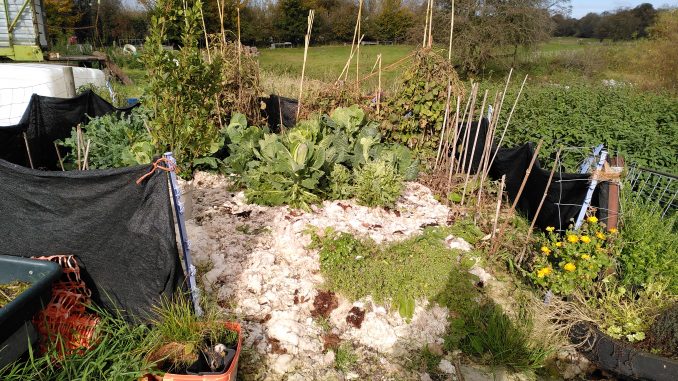
Dedication to the land
“Nature isn’t tidy. It has as much right to roam as everything else on this planet.” – Jen Hunter, Fernhill Farm
Fernhill are pioneers of sustainable agroecology. Andy set about transforming the derelict 160-acre farm in 1997, renovating buildings with reclaimed materials and insulating with Fernhill fleece. Heating is homegrown logs and solar; waste-water is naturally filtered and recycled with willow. 6,000 sheep and 40 cattle roam the fields, and pigs inhabit the woodland. 20,000 visitors attend open days, wool workshops, festivals and weddings each year. It’s a breath-taking, all-encompassing sustainability operation that clearly required visionary thinking and a dedication to the land.
For Jen, intimacy with the natural surroundings is absolutely key to their work. “That’s the only way you learn,” she says. “Just being on your land and looking at it.”
That’s why the pair decided, in 2017, to retrain in Holistic Management and Regenerative Agriculture with the Savory Institute: the organisation feeds data back to inform their land and animal management. Discovering Savory was a ‘coming home’ moment: “We thought, we’re already doing that! It’s not just extensive farming anymore – it’s now got a name!”
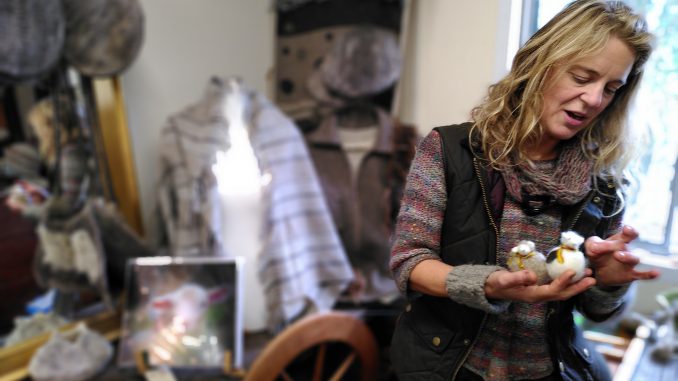
Ecological Outcome Verification
The Institute’s Ecological Outcome Verification (EOV) scheme collects data annually for 5 years to measure land health benefits; increasing plant species, invertebrates and soil health qualities, for example, provide concrete evidence of regeneration which allows membership of the Land to Market platform, the ‘world’s first outcome-based sourcing solution (connecting) conscientious brands, retailers and consumers directly to supply from land verified regenerating.’
Fernhill have already received empirical confirmation that environmental health is increasing on-farm. Government botanists tasked with official biodiversity reporting found the farm is gaining species: 130 were observed per 1 km² where typically a conventional farm reports 50-60 and an arable farm only around 10 species. Jen nods to their no-till approach: “As soon as you drop the plough you kill the soil food web and everything else disappears.”
“Grass is always moist, and soil underneath a dense layer of sward is the right temperature,” continues Jen. “A ploughed field is dry and dusty, and leaches carbon. Without plants there’s no photosynthesis, so no sequestration.”
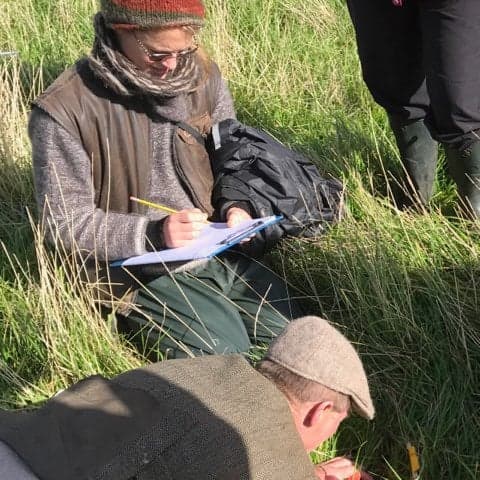
Grasslands and herbivores
As Jen describes it: “Regenerative Agriculture systems mimic what large herbivores have always done. Our electric fence is the wolf that keeps them all in one space.”
Allan Savory, the Institute’s founder, modelled his whole-system approach on the predator/prey relationships with which grasslands co-evolved. Mobs of animals are given a small area of grass to consume over a short period before being moved to a fresh patch. The animals eat or squash down the grass; every blade left behind will photosynthesise, plants retain energy for long root growth which combats erosion, and carbon remains in the ground.
The relationship between grasslands and herbivores is an ancient and mutually-beneficial one, says Jen: “Animals leave behind nutrients, their saliva interacts with the grass, microbes drip off their coat when it rains. The system needs animal waste, dead skin, sweat, and all these lovely nutrients – our soils have always had that here.”
“The key is how long the animals interact with a piece of land,” explains Jen. “Extending the non-grazing days allows plants to recover and mature.”
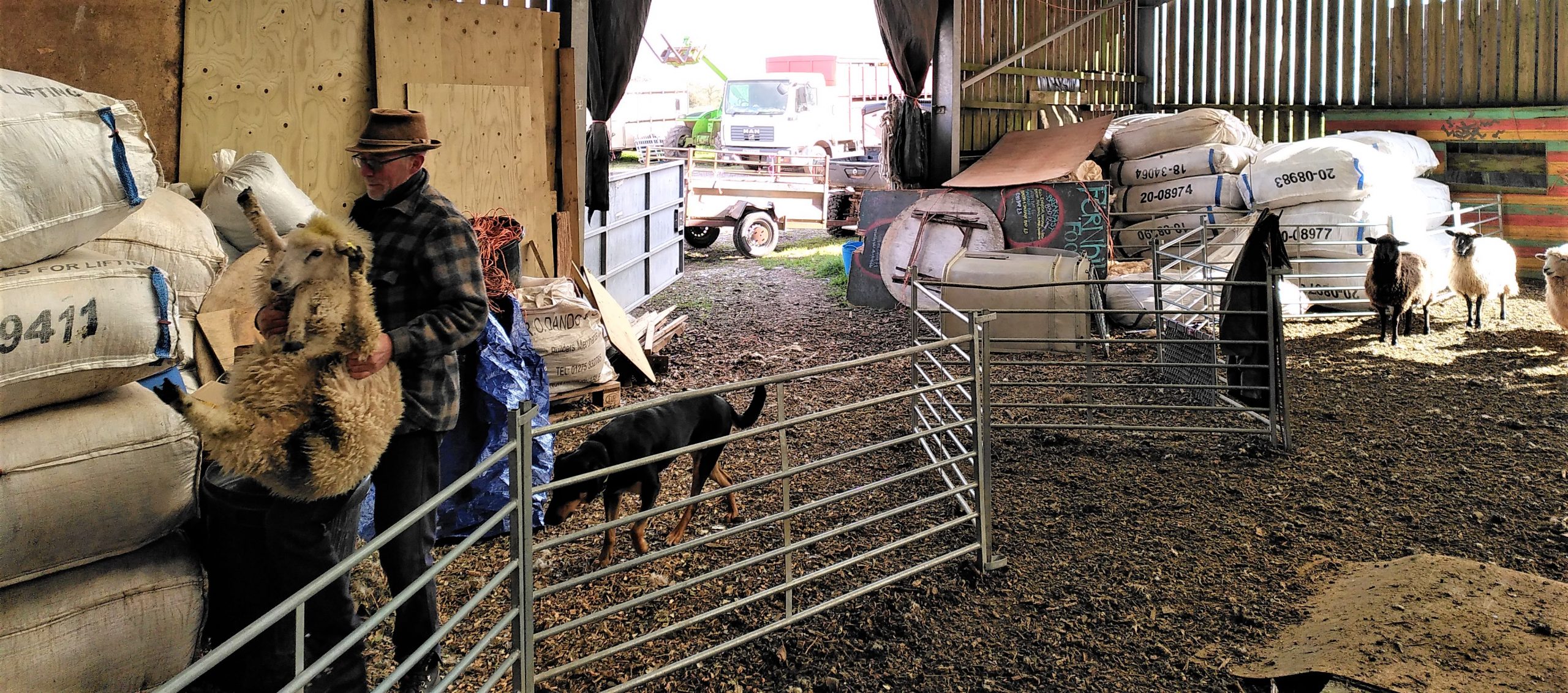
Ecosystem services
Andy is a lifelong shepherd and natural philosopher with an organic ethos: “I’ve never applied any fertiliser – it grows too lush a grass. Animals like a variety of feeds and often eat the hedge first because there’s diversity and medicinal plants there.” He suggests regenerative farmers should receive a benefit for the ecosystem services their animals provide. “If I put my stock on an intensive arable unit they will excrete good biome on to it. I think I should get a payment for that,” argues Andy, referring to nomadic pastoralists who were historically paid to bring animals onto depleted land to graze, trample and leave behind nutritious dung.
The suggestion ties neatly into the English government’s proposals for a new Environmental Land Management scheme (ELM) as the backbone of post-CAP agricultural policy following EU-exit. ‘Public payment for public goods’ would see subsidies given for on-farm environmental improvements. However, the scheme lacked detail and is now in danger of being eroded; and recent rejection by MPs of nature, climate change and food standards protections – called “the biggest betrayal to British farming since the civil war” – suggests the environment may take a backseat after all. U-turns have been made before though!
Amidst ongoing uncertainty regarding British farming’s future, it’s unsurprising that Jen and Andy are sceptical about Westminster’s discourse around agriculture: “We try to be aware of it, but not let it dictate to us. We’re probably a little bit rebellious, a little anarchistic when it comes to being told….”
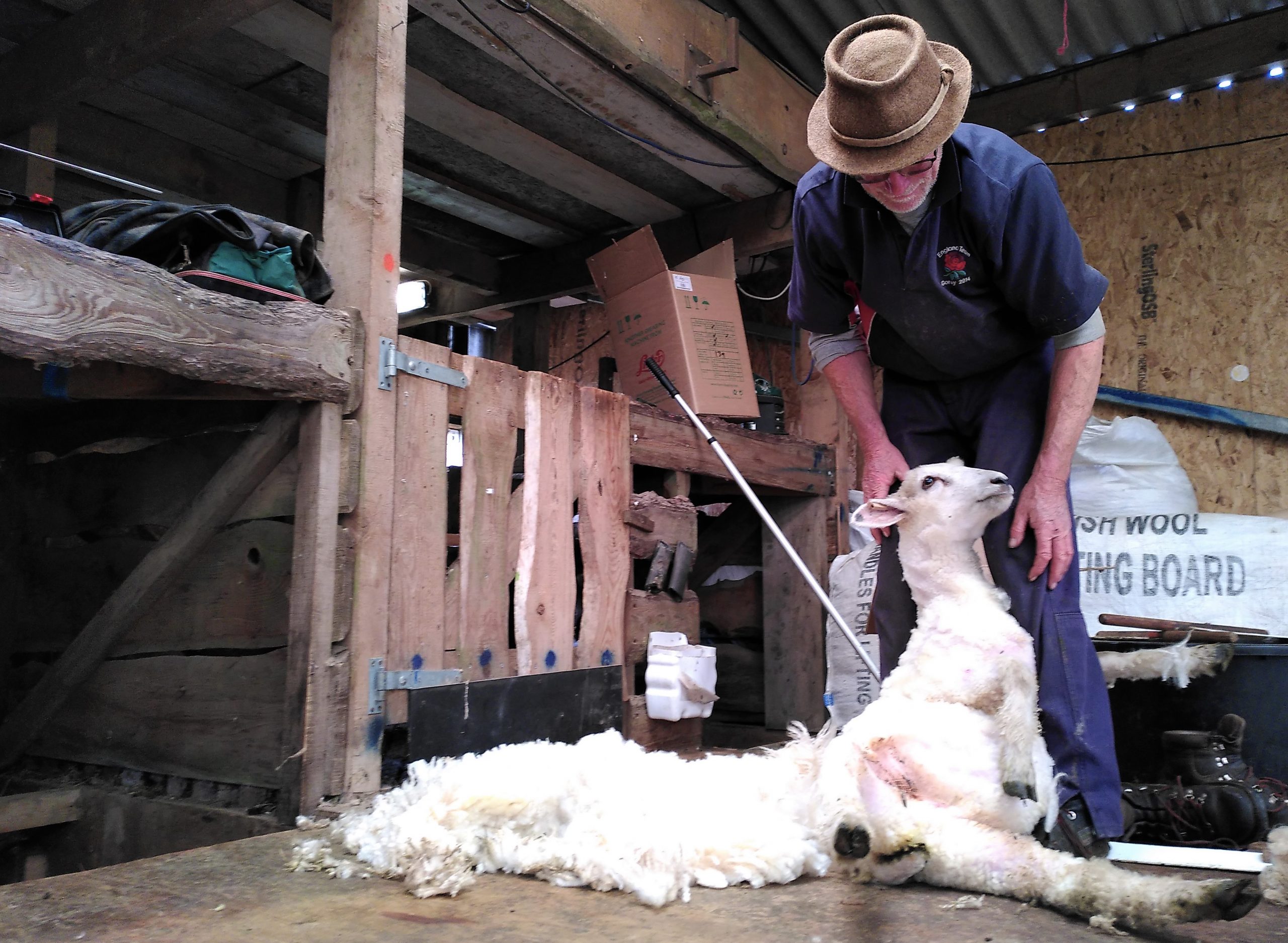
Responsible consumers
Jen and Andy remain ardently uncompromising in their farming principles, suggesting the only way to make an environmental difference is to patronise Regenerative systems.
The supply chain certainly has a significant role to play. Footwear brand Timberland has committed to regenerative leather use and is co-funding Savory’s EOV scheme. Wrangler recently commited to sustainable cotton sourcing by 2025 and sponsors farmer workshops in soil health.
Sustain, the UK’s foremost campaigners for sustainable farming, emphasise the need to support local and British food producers where policy support is lacking.
Jen is looking to expand her responsible consumer base for Fernhill wool products.
The flock is blade-shorn by Andy to ensure the best possible wellbeing for the animal as more wool is left on the sheep: the essential lanolin layer left intact offers greater protection from cold weather or intense sunshine.
Andy is an award-winning shearer and has his moccasins on, sheep splayed and fleece off in under 4 minutes. It’s beautiful to watch.
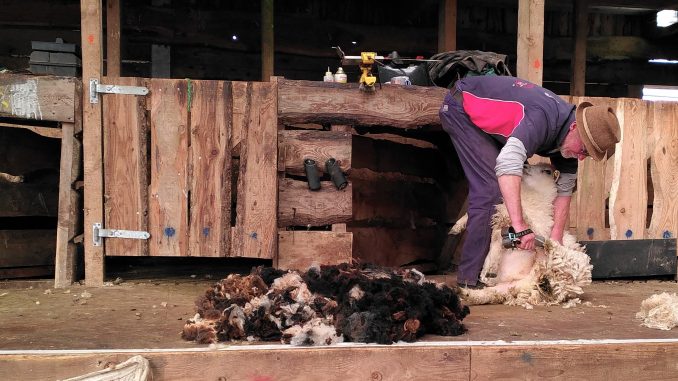
Adding value at farm level
Jen is an expert wool handler, sorting the fleece into grades for different purposes. Bulk orders for yarns, insulation and felt come from the commercial Romney X Shetland flock; the speciality and handcraft market is supplied with lustre long wool fibres from Teeswater and Leicester types.
A Nuffield scholar of global wool industry trends, Jen is researching inter-breeding for multi-functionality – “looking at the genetics to create a multi-purpose breed so there’s more income from wool. Traditionally in this country 90% of the income in sheep is from meat.” She hopes to reposition wool as a primary product in the UK, rather than a by-product of the meat industry.
For Jen “a main driver is passing on skills.” She hopes to establish funding for a Wool School pilot project, providing 6-week internships covering blade-shearing, handling, washing, carding, spinning and crafts: “Practical workshops showing what we can do with natural fibres to add value at farm level without the need for chemical interventions.”
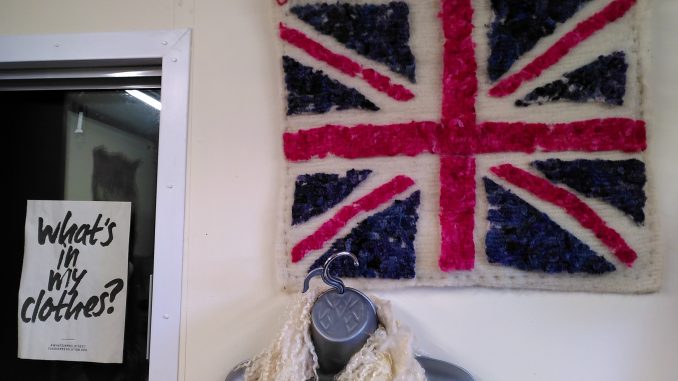
Wool ecology
The local wool ecology is picking up with recent funding of the South West England branch of Fibershed, a worldwide initiative born in California in 2010 that has energised interest in the soil-to-soil textile movement. It aims to rejuvenate regional fibre systems to combat a polluting global system that contributes heavily to climate change. Fernhill supplies fleece to Bristol Cloth which is sent off for spinning, travels back to Bristol for natural over-dyeing, then over the road to the Weaving Mill.
Jen expands on the realities of the global textile system, suggesting the local Fibershed should encompass the whole country rather than splitting regionally. “We’re so small compared to California. The Bristol Cloth fleeces are sent up to Yorkshire for spinning – which is no distance at all when considering the majority of wool-growing countries have few, if any, wool processing plants so everything goes back and forth to China. The distance between South and North of England is absolutely nothing compared to the footstep of an average garment.”
Sustainable fashion and fibres certainly seem to be on the rise, while a pandemic-induced resurgence of handicrafts and homegrown lifestyles suggests the time is ripe for Jen’s Products with Provenance. Fernhill’s own-brand of holistic education will continue to enlighten and inspire with the beauty and abundance of their alternative. The rebels see a rising interest in Regenerative Agriculture and are hoping to emerge ahead of the curve.
“We were once thought of as too traditional with our extensive nomadic ways; now it’s seen as revolutionary and we’ve done nothing different for years. Hardly anything has changed except maybe our understanding of what our regenerative journey feels like!” – Jen Hunter, Fernhill Farm
More on the UK
‘Too good to be true’ – The UK Co-op Helping New Entrants Get Access to Land
UK | RSA Report finds ‘Our Future in the Land’ should be Agroecological
What would really happen to GHG Emissions if England and Wales went Organic?




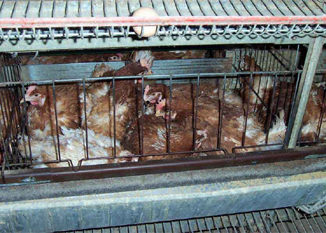
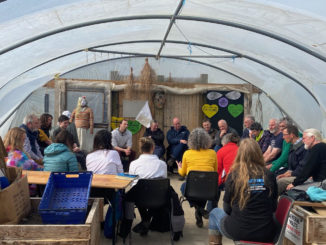
1 Trackback / Pingback
Comments are closed.